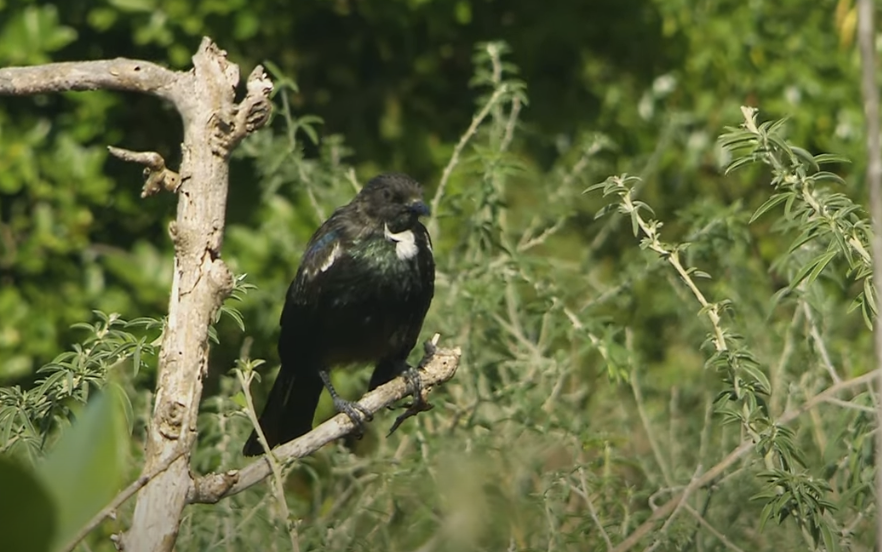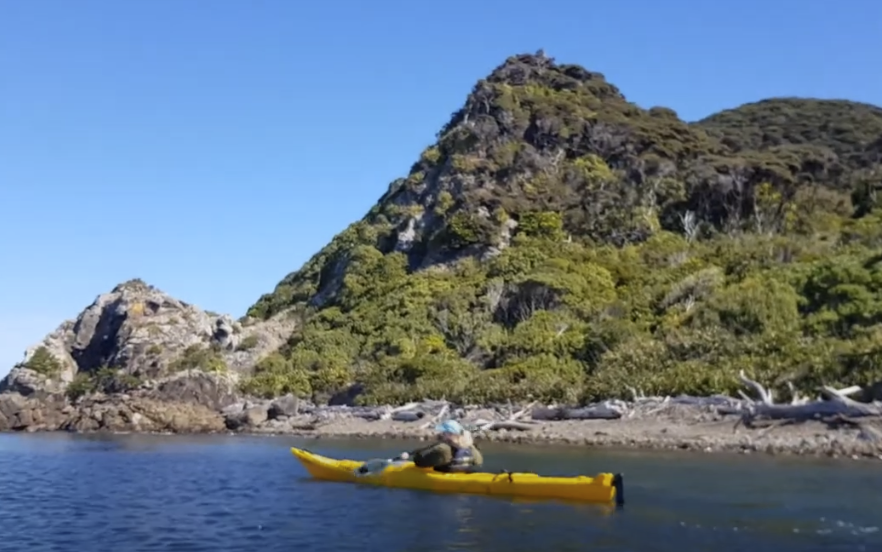Kapiti Island, nestled off the west coast of New Zealand’s North Island, offers an unparalleled eco experience, inviting nature enthusiasts to immerse themselves in a sanctuary teeming with wildlife and rich in Māori history. This article provides a detailed guide to planning your visit, what to expect, and how to make the most of your Kapiti Island eco experience.
Understanding the Kapiti Island Eco Experience
Situated off the coast of Paraparaumu, Kapiti Island offers a profound ecological and cultural experience, rich in native biodiversity and Māori heritage.
| Category | Details |
| Location and Accessibility | Kapiti Island, about 5 km off the coast of Paraparaumu, can be accessed by authorized ferry services from the Kapiti Boating Club’s boat ramp. Pre-booking is required due to limited daily visitors. |
| Historical Significance | The island holds significant cultural importance in Māori history, having been inhabited by the Ngāti Toa tribe. Today, it stands as one of New Zealand’s oldest and most successful nature reserves. |
| Flora and Fauna | Kapiti Island is renowned for its biodiversity, serving as a sanctuary for endangered native birds such as the kākāriki and kiwi. Its predator-free status enables these species to thrive safely. |
Planning Your Visit
Planning Your Visit to Kapiti Island begins with understanding the essentials for a memorable eco-experience.
Best Time to Visit
The optimal time for experiencing Kapiti Island’s natural beauty and wildlife is during the spring and summer months, from October to April. These months offer:
- Mild and pleasant weather ideal for outdoor activities like hiking and wildlife viewing.
- Higher chances of spotting various bird species and enjoying the island’s lush vegetation.
Booking Your Trip
When planning your visit to Kapiti Island, consider the following:
- Ferry Tickets: It is crucial to book your ferry tickets well in advance, especially during peak seasons (spring and summer). Prices typically range from NZD 75 to 95 for a return trip per person.
- Permits: Access to Kapiti Island is strictly regulated by the Department of Conservation. Visitors must obtain a permit, usually facilitated by the tour operator you choose.
- Accommodation: Options for staying overnight on Kapiti Island are limited but popular among visitors seeking an immersive experience. Accommodation choices include eco-lodges and a campsite. Booking your stay well ahead of time is advisable to secure a spot.
What to Pack
To make the most of your visit to Kapiti Island, pack the following essentials:
- Weather-Appropriate Clothing: Pack layers of clothing suitable for changing weather conditions, including a waterproof jacket for unexpected showers.
- Comfortable Hiking Shoes: Sturdy footwear is essential for exploring the island’s trails, which vary in terrain and difficulty.
- Binoculars: Enhance your bird watching experience with binoculars to spot native and migratory bird species that inhabit the island.
- Sunscreen and Insect Repellent: Protect yourself from the sun and insects with adequate sunscreen (SPF 30 or higher) and repellent.
- Water and Snacks: Carry sufficient water and snacks, as facilities on the island are limited.
Experiences on Kapiti Island

Kapiti Island offers a range of enriching experiences for visitors, providing an opportunity to connect with New Zealand’s unique natural and cultural heritage. Below are some key activities and highlights:
Guided Walks
Engage in guided walks led by knowledgeable guides who interpret the rich natural and cultural heritage of the island. These tours can last from a few hours to a full day, depending on your interest and fitness level. The guided walks are tailored to enhance your understanding of the island’s unique ecosystem and its historical significance.
- Short Walks (2-3 hours): Ideal for those looking for a brief yet informative experience. These walks cover the basics of the island’s flora and fauna, providing a snapshot of its natural beauty.
- Half-Day Walks (4-5 hours): Perfect for moderate explorers interested in a deeper dive into the island’s ecosystem. These walks include visits to key areas where you can observe various plant species and learn about the island’s conservation efforts.
- Full-Day Walks (6-8 hours): Suited for avid hikers and nature enthusiasts who want to experience the island comprehensively. These extensive tours cover multiple habitats and offer the chance to see a wide range of wildlife.
- Flora and Fauna: Learn about native plants, their uses in traditional Māori medicine, and the ongoing efforts to conserve the island’s unique biodiversity. Guides will highlight the relationship between the flora and fauna, and how they support each other.
- Historical Insights: Gain knowledge about the island’s history, including its use as a whaling station and its significance in New Zealand’s conservation movement. Hear stories of early settlers and their interactions with the island’s environment.
Bird Watching
Kapiti Island is a birdwatcher’s paradise, renowned for its rich avian diversity. Early mornings or late evenings are the best times to see birds like the North Island kōkako, takahe, and more. The island’s predator-free environment provides a sanctuary for many rare and endangered species, making it an ideal spot for bird enthusiasts.
- North Island Kōkako: Recognizable by its striking blue wattles and haunting calls. These birds are often seen in the forested areas of the island.
- Takahe: A flightless bird once thought extinct, now thriving on the island. Spotting a takahe is a highlight for many visitors, given their rarity.
- Little Spotted Kiwi: New Zealand’s smallest kiwi, often seen during night tours. The island offers one of the best chances to observe these elusive birds in their natural habitat.
- Best Times: Dawn and dusk when birds are most active. Early morning birdwatching tours are particularly popular.
- Equipment: Bring binoculars and a field guide for the best experience. A camera with a good zoom lens is also recommended for capturing distant birds.
Night Tours to See Kiwi
Night tours offer a rare opportunity to spot the nocturnal kiwi in its natural habitat. These tours are subject to availability and weather conditions. The experience of seeing a kiwi in the wild is unforgettable and provides a unique glimpse into the life of this iconic bird.
- Little Spotted Kiwi: Most commonly seen during these tours. The guided walks increase your chances of spotting these shy, nocturnal birds.
- Tour Availability: Dependent on weather and seasonal conditions. Night tours are typically more successful in dry, calm weather.
- Guided Experience: Led by knowledgeable guides who ensure minimal disturbance to wildlife. Guides provide insights into kiwi behavior and conservation efforts.
- Preparation: Wear warm clothing and sturdy footwear; bring a red-light flashlight to avoid startling the birds. Red light is less disruptive to the nocturnal animals and helps maintain night vision.
Cultural Experiences
Learn about the island’s Māori heritage through stories and visits to significant sites, offering a deep dive into New Zealand’s indigenous culture. The cultural experiences on Kapiti Island provide a profound understanding of the Māori connection to the land and their traditions.
- Māori Heritage: Explore the rich cultural history and significance of the island to the Māori people. Discover the stories of the island’s original inhabitants and their descendants.
- Storytelling: Hear traditional stories and legends associated with Kapiti Island. These tales offer insights into the Māori worldview and their relationship with nature.
- Significant Sites: Visit historically important locations and learn about their cultural importance. Sites include ancient pa (fortified village) locations and other areas of historical significance.
- Interactive Learning: Participate in cultural activities and demonstrations for a hands-on experience. Activities may include traditional Māori crafts, cooking methods, and ceremonies.
Conclusion
To fully enjoy the Kapiti Island eco experience, respect the natural environment. Stick to marked trails, keep noise to a minimum to not disturb the wildlife, and pack out all your trash. By visiting Kapiti Island, you contribute to the conservation efforts and help ensure that this sanctuary continues to be a refuge for New Zealand’s unique wildlife.
Kapiti Island offers more than just a getaway; it provides a transformative eco experience that educates, inspires, and rejuvenates all who visit. Whether you’re a bird lover, a history enthusiast, or simply in need of a peaceful retreat, the Kapiti Island eco experience promises an unforgettable encounter with nature at its most pristine.
FAQ
A1: The ferry ride to Kapiti Island takes approximately 20 minutes from the mainland.
A2: There are no commercial food services; visitors must bring their own food. However, water is available at the lodges.
A3: Apart from various bird species, you might also encounter marine life around the island, including seals and occasionally dolphins.
A4: Yes, the Kapiti Island eco experience is family-friendly, but due to the natural terrain and the need for quiet to observe wildlife, it may be best suited for older children.
A5: While you can explore some parts of the island without a guide, certain areas require you to be accompanied by an authorized guide to protect the wildlife and habitats.
